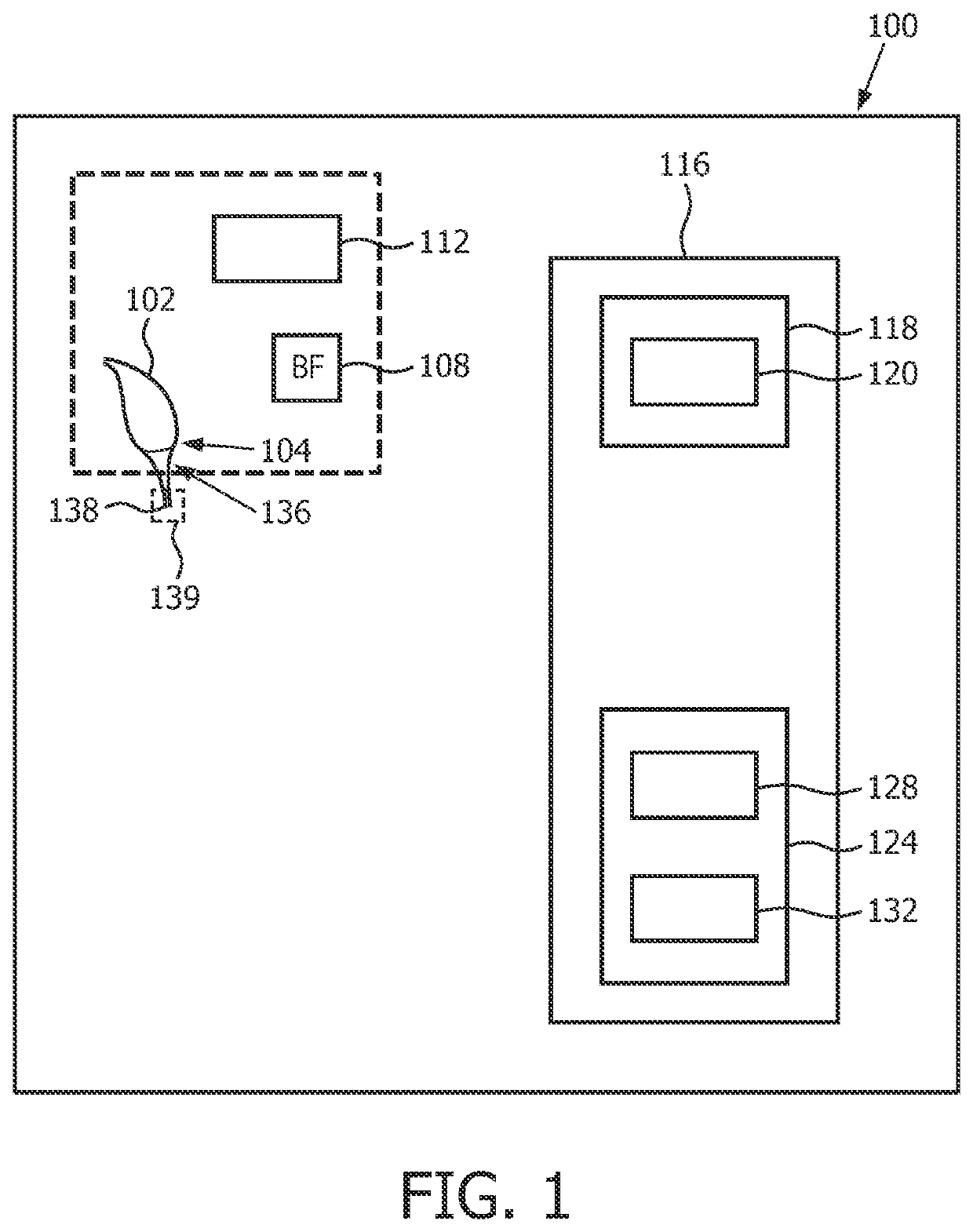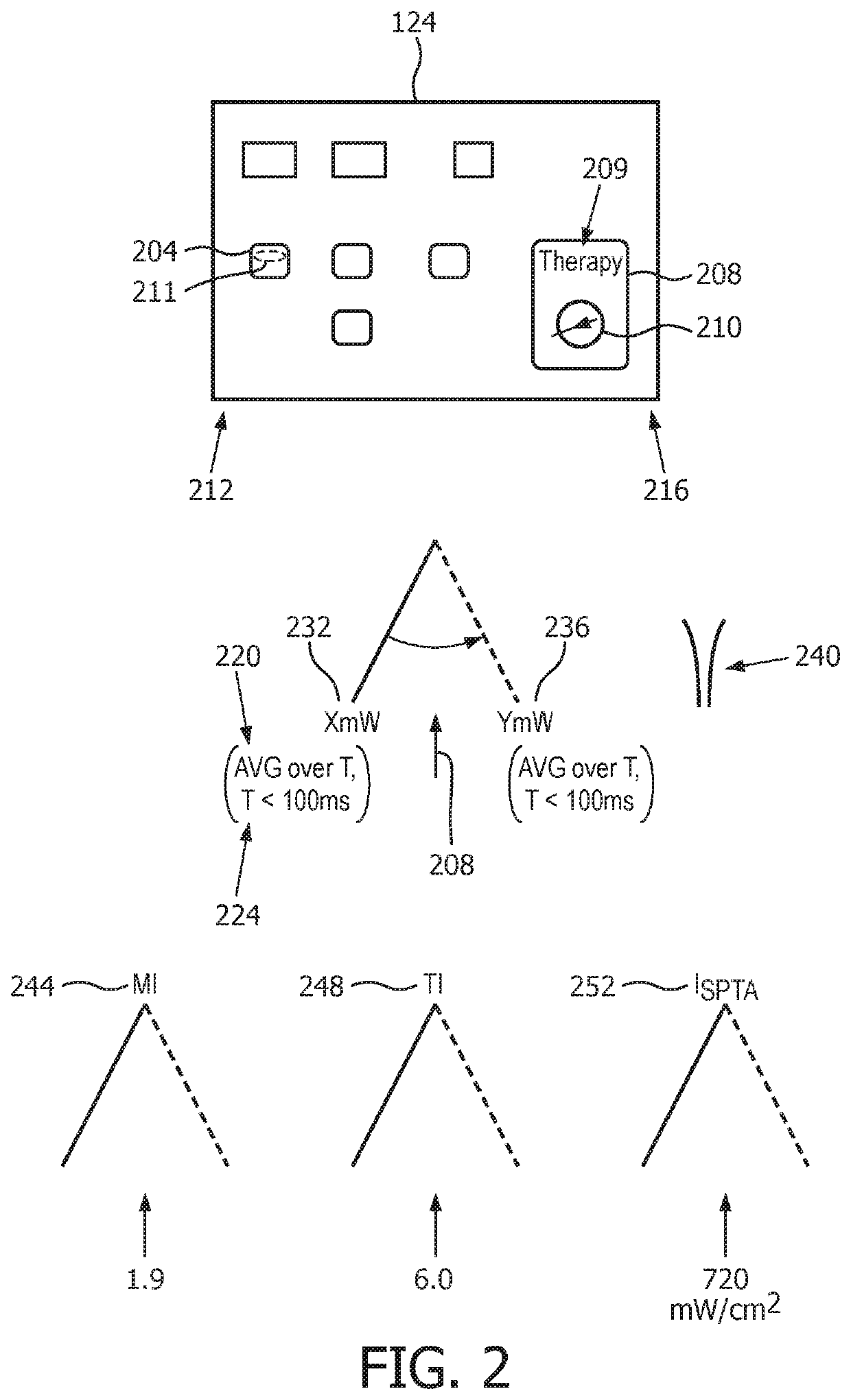Ultrasound shear wave elastography featuring therapy monitoring
a technology of ultrasound and ultrasound push pulse, applied in the field of medical ultrasound push pulse generation, can solve the problems of inaccurate visualization of ablation zone and potentially incomplete ablation treatment, and achieve the effects of evaluating its effectiveness, accurately and robustly quantifying a stiffness range, and higher driving voltag
- Summary
- Abstract
- Description
- Claims
- Application Information
AI Technical Summary
Benefits of technology
Problems solved by technology
Method used
Image
Examples
Embodiment Construction
lass="d_n">[0024]FIG. 1 depicts, by way of illustrative and non-limitative example, an ultrasound scanner 100 which incorporates a therapy specific ultrasound shear-wave-elastography exposure-safety facility. In effect, the facility is implementable on a conventional diagnostic ultrasound system. The scanner 100 includes an ultrasound imaging probe 102 that incorporates an ultrasound transducer 104, an ultrasound beamformer 108, an ultrasound exposure safety processor 112, and a user interface 116. The user interface 116 includes a display 118 having a screen 120, and a user control section 124 that includes a facility enablement switch 128 and a fingerprint scanner 132.
[0025]The transducer 104 is configured for conventional ultrasound imaging modes, e.g., A-mode, two-dimensional (or “B-mode”) imaging, Doppler, contrast imaging and etc. It is further configured for producing, i.e., forming and emitting, acoustic-radiation-force-based push pulses 136 for shear wave elastography imagi...
PUM
 Login to View More
Login to View More Abstract
Description
Claims
Application Information
 Login to View More
Login to View More - R&D
- Intellectual Property
- Life Sciences
- Materials
- Tech Scout
- Unparalleled Data Quality
- Higher Quality Content
- 60% Fewer Hallucinations
Browse by: Latest US Patents, China's latest patents, Technical Efficacy Thesaurus, Application Domain, Technology Topic, Popular Technical Reports.
© 2025 PatSnap. All rights reserved.Legal|Privacy policy|Modern Slavery Act Transparency Statement|Sitemap|About US| Contact US: help@patsnap.com



